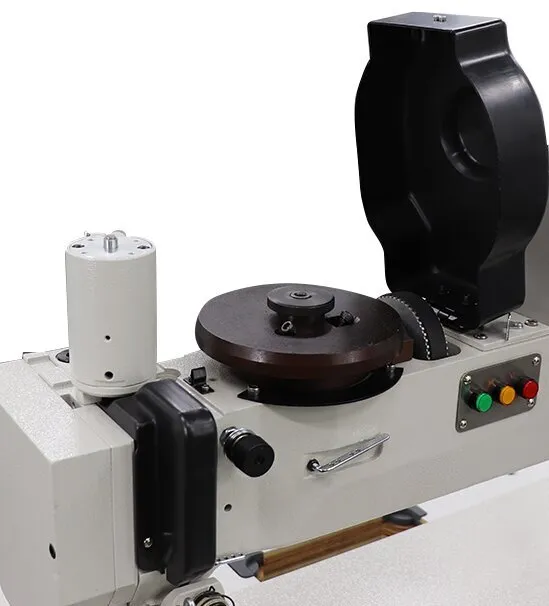two needle leather stitching
The Art of Two Needle Leather Stitching
Leatherworking is a time-honored craft that dates back centuries, characterized by its ability to marry form and function in a variety of striking products, from fine wallets to intricate belts. Among the many techniques embraced by leather artisans, two needle leather stitching stands out as a method revered for its strength, durability, and aesthetic appeal. This technique not only binds pieces of leather together but also enhances the overall quality and beauty of the final product.
What is Two Needle Leather Stitching?
Two needle leather stitching, often referred to as saddle stitching, employs two needles threaded with a single length of thread. One needle is threaded through one side of the leather, while the other is stitched through the opposite side. This unique approach creates a locked stitch that provides superior strength compared to single needle techniques. Because the stitches interlock, the likelihood of unraveling is significantly minimized, making it an ideal choice for items that require durability, such as belts, bags, and wallets.
The Tools of the Trade
To embark on a journey into the world of two needle leather stitching, one needs a few fundamental tools. These include
1. Leather High-quality vegetable-tanned leather is preferred for its sturdiness and ability to accept dyes and finishes well. 2. Needles Two blunt-tipped harness needles are essential for this technique, allowing for easy passage through thick leather. 3. Thread A strong waxed thread, often made from polyester or nylon, is favored for its strength and ability to withstand wear.
4. Awl This tool is used to create stitch holes, ensuring accurate and evenly spaced stitching.
6. Cutting Tools A sharp knife or rotary cutter for cutting the leather to the desired shape.
two needle leather stitching

The Process
The process of two needle leather stitching begins with preparing the leather by cutting it to the desired dimensions. After shaping the pieces, the craftsman uses an awl to create evenly spaced holes along the edges where the stitching will occur.
Next, a length of thread, typically several times the length of the project, is cut and threaded through each needle. Starting from one end, one needle is inserted into the first hole and brought out through the adjacent hole on the opposite side. The other needle is then threaded through the same hole, effectively locking the stitch. This process is repeated along the length of the seam until reaching the end.
To secure the final stitch, the thread is often backstitched, ensuring that the closure is not only tight but beautifully finished.
The Advantages
The two needle technique offers several advantages. Beyond the unmatched durability it provides, it creates a visually appealing pattern on the leather’s surface. The symmetry and neatness of the stitch line contribute to the overall aesthetic quality of the leatherwork. Additionally, the locked stitches provide added security against wear and tear, making it suitable for high-use items.
Moreover, this technique encourages a deeper connection between the craftsman and their work. The process is meticulous, requiring patience and precision, qualities that foster the appreciation of traditional craftsmanship in an increasingly automated world.
Conclusion
In conclusion, two needle leather stitching is a testament to the skills of leather artisans throughout history. By combining functionality with beauty, this technique remains an enduring choice for those looking to create strong, reliable leather goods. Whether you are a novice seeking to learn the basics or an experienced craftsman perfecting your skill, embracing the art of two needle leather stitching opens doors to endless creative possibilities. It is more than a method; it is a celebration of craftsmanship and an invitation to explore the rich heritage of leatherworking.
-
Boost Production Efficiency with a Pattern Sewing MachineNewsAug.29,2025
-
Industrial Excellence with the Best Heavy Duty Sewing MachineNewsAug.29,2025
-
Precision and Power with the Best Pattern Sewing MachineNewsAug.29,2025
-
Reliable Bulk Packaging Starts With the Right FIBC Sewing MachineNewsAug.29,2025
-
Advanced Packaging Solutions: Elevate Productivity with Jumbo Bag Sewing Machine and Industrial Stitching EquipmentNewsAug.29,2025
-
High-Performance Solutions for Bulk Packaging: FIBC Sewing Machine and MoreNewsAug.29,2025
-
Maximize Efficiency with an Industrial Cylinder Arm Sewing MachineNewsAug.28,2025


























